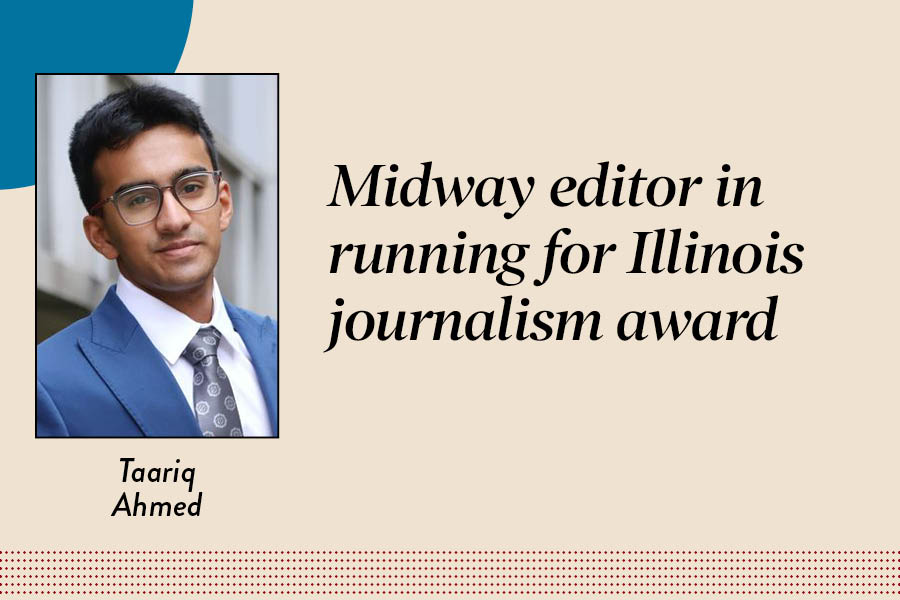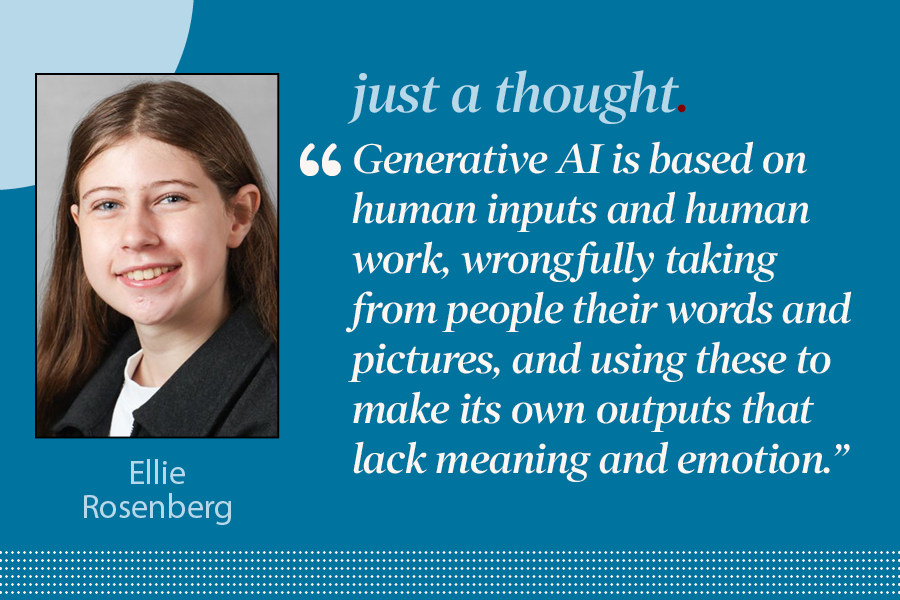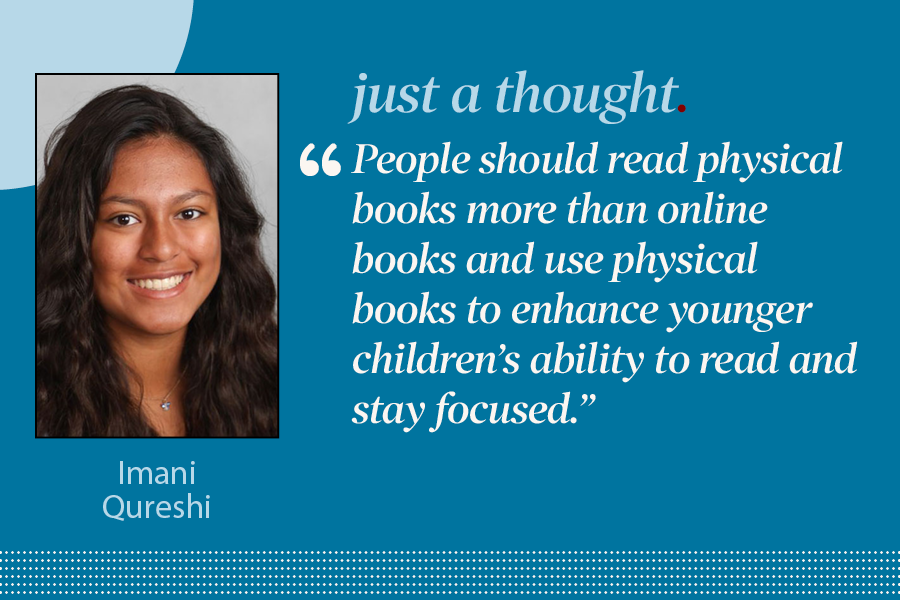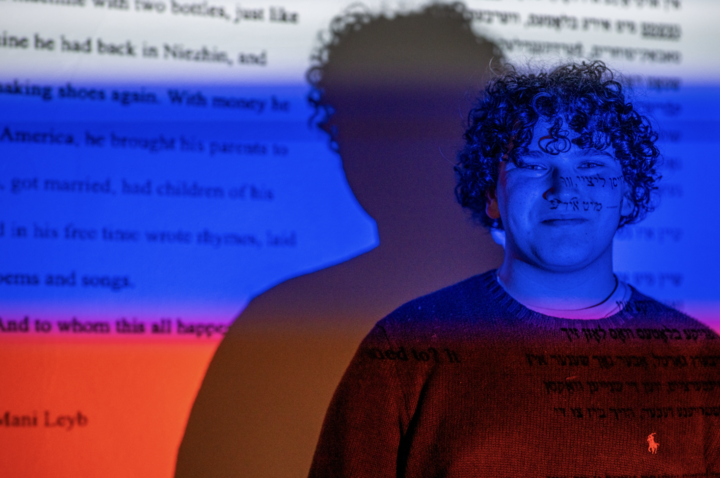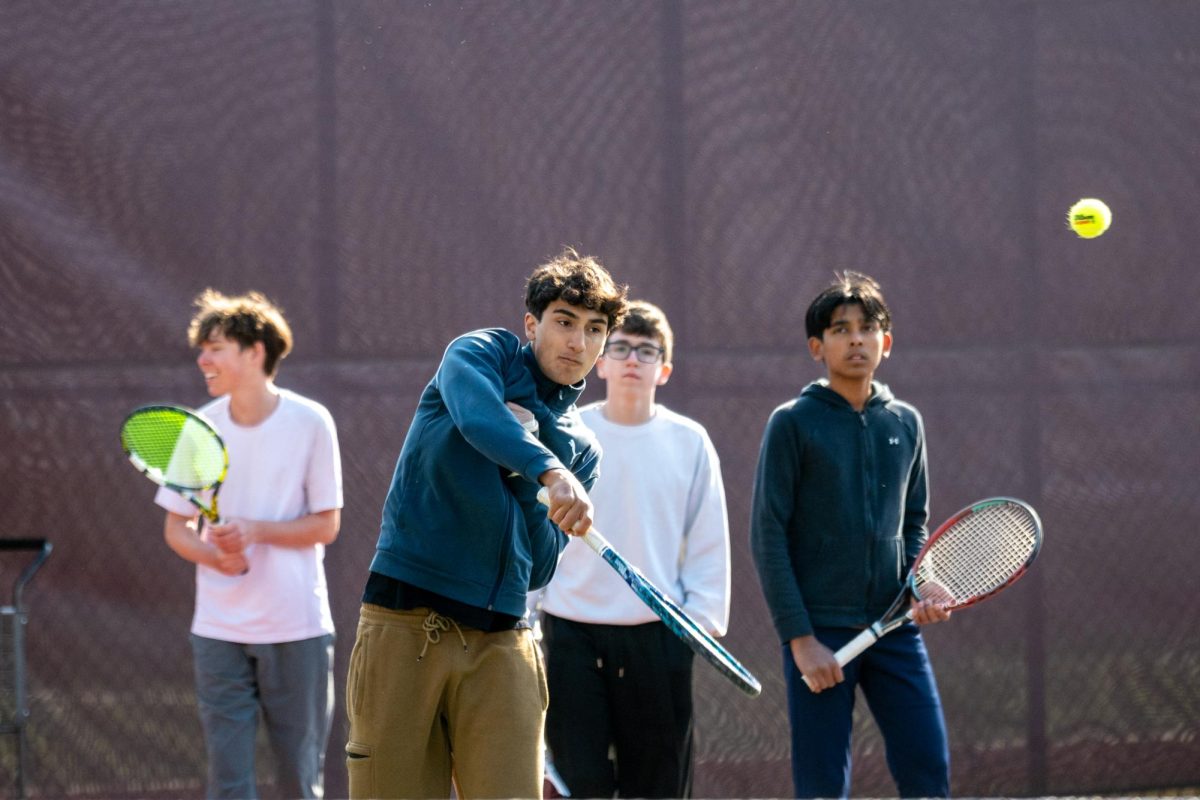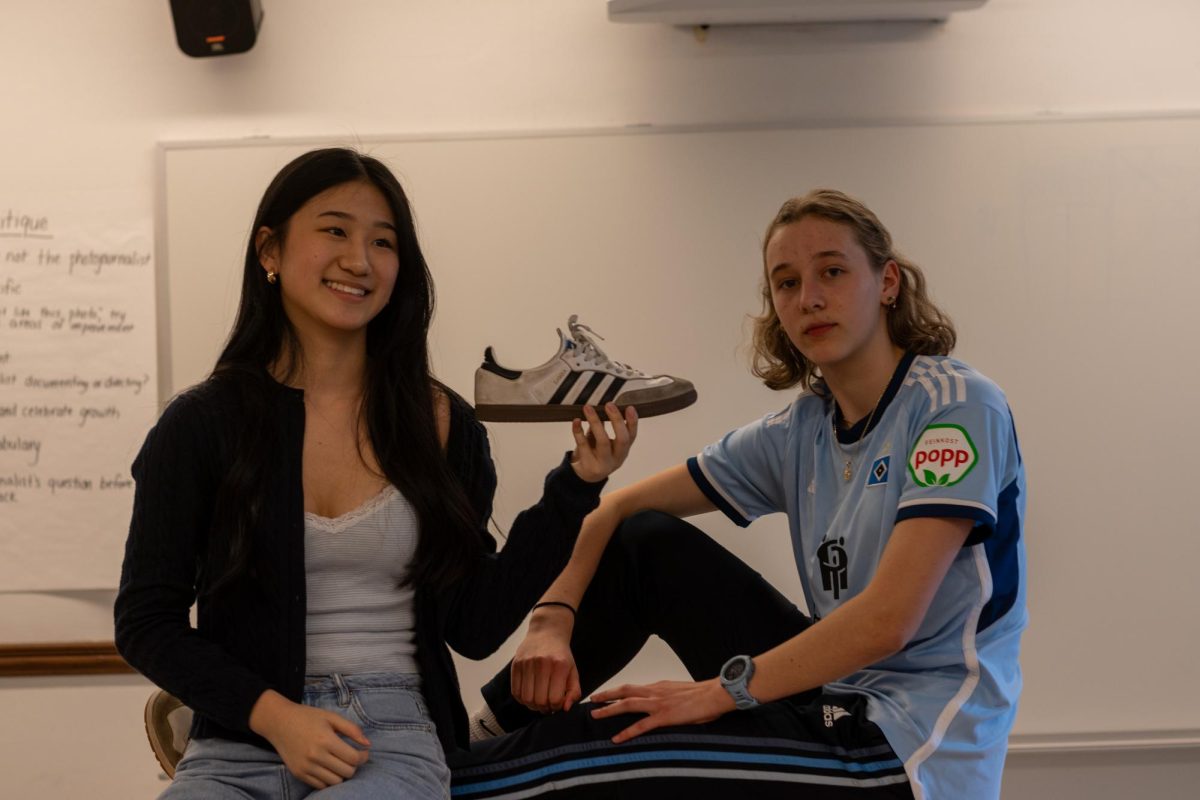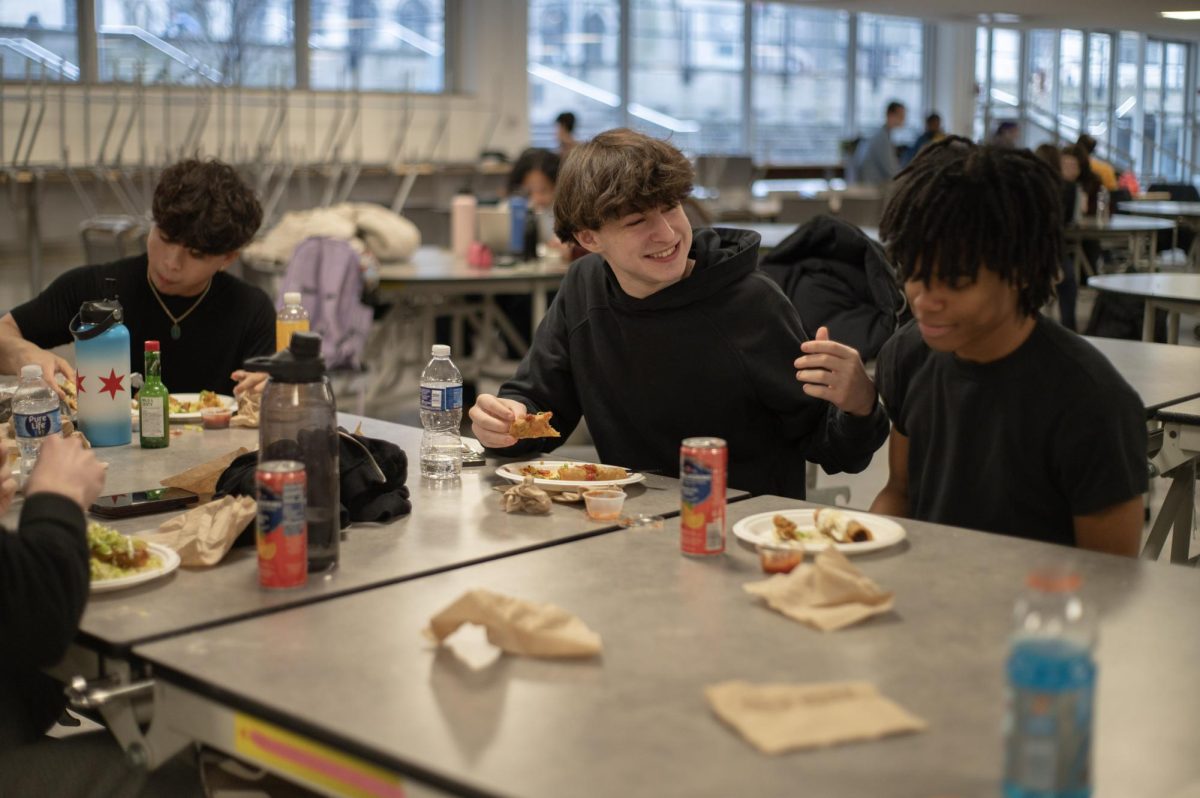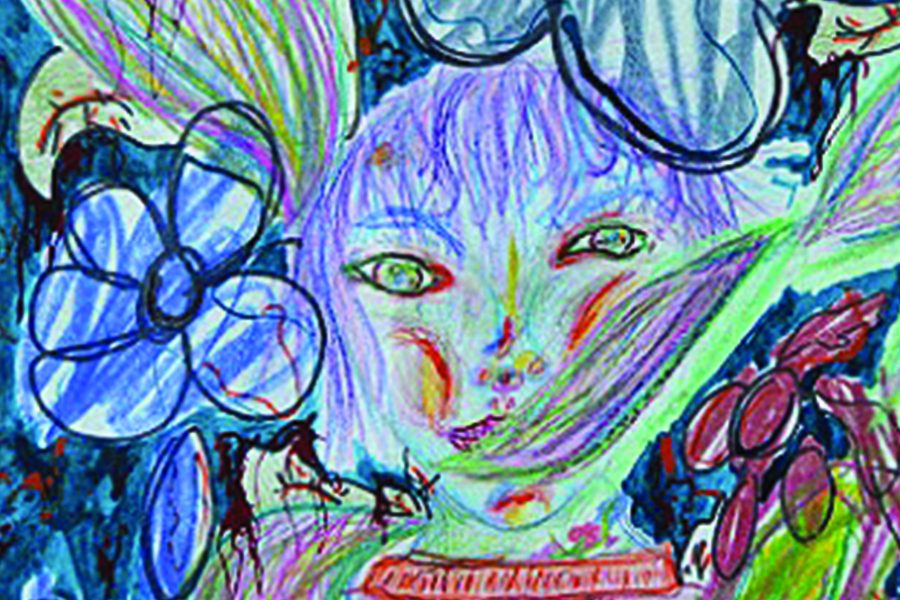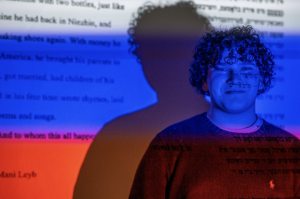Art allows self discovery, confidence
For senior, art is a way to cope with difficulties
March 8, 2018
Rapt attention, uproarious applause, a standing ovation — a powerful voice projects out to the audience. In an ultimate display of confidence and vulnerability, Elizabeth Meyer tells her story through her essay “On Teendom” during the Martin Luther King Jr. Assembly Jan. 11.
Through late middle school and high school, art helped coax Elizabeth’s natural confidence to the surface. It has always been a way for her to cope with difficulties in her life: sexual assault, depression, anxiety, Type 1 diabetes.
The inspiration for “On Teendom” originated at an NYU film camp last summer. While there, she produced a three-minute film about her introduction to Chicago’s underground art scene through her father, but she said her experience was tainted by harassment from male students.
“I found myself being harassed and touched, pushed away from the camera, not allowed to use the editing software simply because I was female, and when I would sit and talk with other females in this program, they would have the exact same experiences.”
“On Teendom” — a five-page double-spaced personal essay — is a reflection of her experiences over the last five years, what it’s like to be a teenage girl.
“Whenever I hear other teenagers talk about things that I relate to, it just feels so good to know that I’m not alone in this, and I’m not crazy. So I wrote the essay to let people know that they’re not alone, and they’re not crazy.”
Sunny Neater, Elizabeth’s teacher for an independent study in art, would not have expected Elizabeth in sophomore year, or any student really, to have taken the stage and present as she did during the MLK assembly this year.
“I saw her going from this sophomore, who was trying to figure out if Lab is a welcoming or right place for her, to being this senior who’s standing on the stage, who’s not asking Lab if it’s the right place for her, but telling Lab it is the place where she’s going to take up space. Instead of asking, it’s telling: ‘I’m here, this is what I want. Make some room.’”
Before this year, Elizabeth said she felt invisible in 562 students.
“It’s hard to be this one person I know of with a disease in a community of individuals,” she said. “It’s very scary and isolating.”
With her diabetes diagnosis in eighth grade, she started to write, mainly focusing on descriptive, flowery fictional short stories with themes of magical realism.
“There were all these really adult aspects of my life that I didn’t know how to handle because I was this 13-year-old little girl, who was being thrown into this world that was really scary,” she said, “and so I began to write.”
Elizabeth said she felt the Lab administration handled her illness poorly, which was mentally and emotionally harmful. Her feelings of isolation increased, culminating in what she described as a “massive mental breakdown” her freshman year.
To help cope, during sophomore year, she started producing a self-published, handmade magazine that included art and interviews of Chicago artists, poetry and discussions with Lab classmates.
“I really didn’t feel like I had a voice here, and I had friends who were seniors, but I really had no friends in my grade,” she said, “so I started meeting and interviewing all these artists around the city, and through that I started going to shows.”
She began to go to more and more shows her junior year — poetry readings, art exhibitions and musical performances — finding a space for herself in the DIY Chicago art scene, a community where artists practice their craft outside galleries in places like basements and living rooms.
“Every weekend I would be going to a DIY space, seeing these people making art. It was this amazing feeling to be with these older people who really wanted to listen to me and who were excited about my art and my voice,” she said.
Although she said the scene boosted her personal and artistic confidence, she edged away from it because of drug and alcohol use within its community, as well as her experience with sexual assault.
“A lot of my art is just based on my personal experiences, and experiences of people I’ve spoken with,” she said, “and it’s not art that I make necessarily because I want to be activist, it’s art that I make because I have to make it because if I don’t create, I’ll be stifled by my experiences, and I think it does have a message of activism or advocacy.”
Ms. Neater said she thinks it’s hard for artistic students to find a space in a school like Lab, with its many STEM but few arts requirements, but Elizabeth has.
“She seems to be confident by showing up as her most authentic self and feeling like she’s made a space for herself at Lab,” Ms. Neater said. “I feel like Lab is full of such quirky and interesting people, but I think, from what I hear, it might be hard to take up space as a really creative, artistic, wide-ranging person.”

